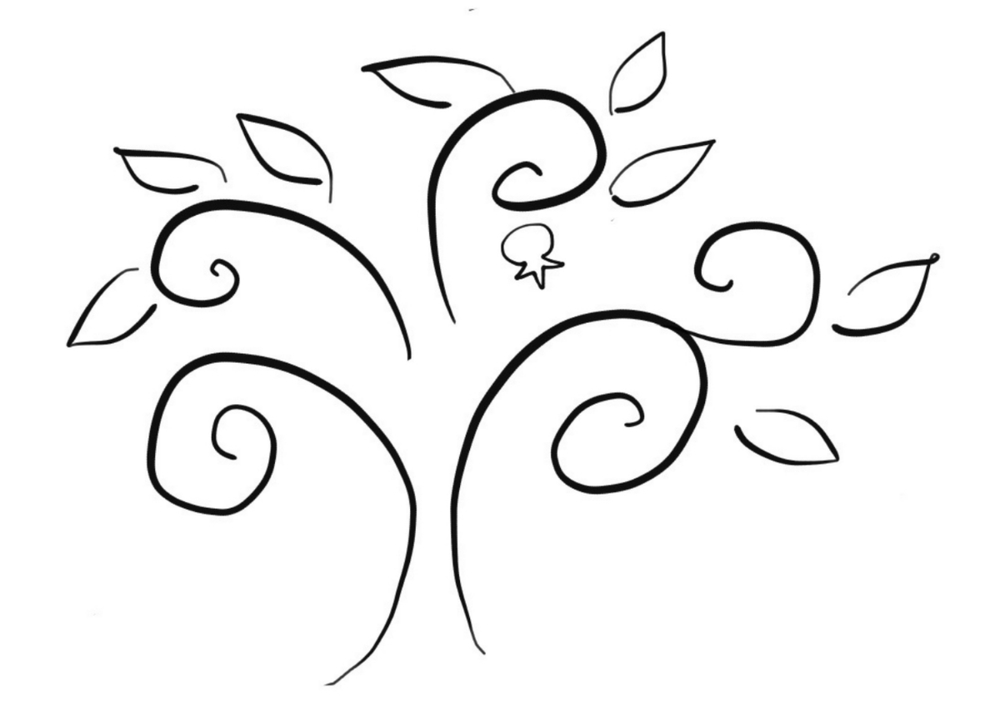Imaginations have the wonderful property of not being bothered by too much detail. Once pencil is put to paper, the details must be "fleshed out." Exactly what are the angels' hands going to be DOING? Where can their wings fit into a Star of David? Should the feathers be flowing outward, or downward? How real does all this have to be, or can it be fanciful? As you can see, countless questions present themselves.
Regarding the angels' hands: each became the possibility for a symbol. Uriel is the guiding light of God. What is the Jewish symbol for light? The Ner Tamid of the ancient temple, the seven branched menorah. The Torah gives a detailed, and at the same time puzzling description of how it is to be made. For centuries artists have tried to depict this special menorah. The Torah uses botanical language to describe a "calyx" or cup that holds the wicks and olive oil, and where these calyxes are to be placed. It occurred to me, that the circles I was drawing to make the cups might be seen as the sephirot of the mystics. The sephirot are a concept that entered Judaism much later than the Torah, but central to the rich mix our culture has become. I chose to embed the sephirot subtley into the menorah for those who might see it.
Michael accompanies, symbolized by his holding of the hand of the figure in the center of the painting. Gabriel, of course, has a flaming sword, "turning this way and that" (I chose not to depict the "turning" as that wouldn't fit a 9th C style.) But what about Raphael? How can I show him as healing? I chose to depict him as raising his hands in the priestly blessing, like Aaron the high priest who issues forth from the Holy of Holies to bless the people. The questions of how to make the hands became portals to new understandings about the angels. The artwork had taken on a life of its own, and it began to teach me.


